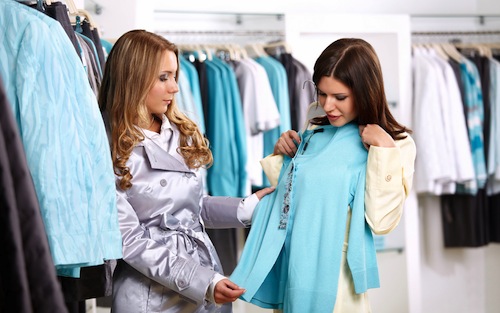 It is difficult and confusing for shoppers to know which garments will fit and flatter them without trying the clothes on in the store, because clothing sizes are not standardized. Each brand caters to a different body shape and perpetrates a different degree of vanity sizing. In spite of this, U.S. online apparel sales represented a $19.5 billion per year industry in 2009 according to the U.S. Census Bureau. The clear solution to the fit issue is a virtual fit assistant–a service that recommends clothes based on fit.
It is difficult and confusing for shoppers to know which garments will fit and flatter them without trying the clothes on in the store, because clothing sizes are not standardized. Each brand caters to a different body shape and perpetrates a different degree of vanity sizing. In spite of this, U.S. online apparel sales represented a $19.5 billion per year industry in 2009 according to the U.S. Census Bureau. The clear solution to the fit issue is a virtual fit assistant–a service that recommends clothes based on fit.
Leading the charge for virtual fit assistants were Zafu, TrueFit, and MyShape. These services rely on surveys paired with extensive market research to divine the body measurements of their users. In August, Zafu and TrueFit graduated from their startup phase when they partnered with major retailers (Charming Shoppes and Macy’s respectively) to deliver online fit recommendations via the retailers’ websites. MyShape was recently acquired by Mipso, and its technology has been incorporated as a white label product into 16 separate websites to date, according to Menny Shalom of Mipso.
2011 also saw the introduction by Unique Solutions, Tukatech, and UPcload of body scanners for the purpose of recommending clothing that fits. Unique Solutions is deploying body scanners that are similar to those recently rolled out at airports to measure customers’ bodies. They currently operate size matching stations under the brand Me-Ality near Atlanta and Philadelphia, and will expand their operations to Chicago’s North Brook and Water Tower malls on November 25th and 26th respectively. Tukatech’s Styku system leverages the less expensive Microsoft Kinect device to enable body scans either at an in-store kiosk embedded in the fitting room or at home via a PC. Once the customer scans him or herself, Styku recommends garments based on fit. The recommended garments are displayed using a sophisticated 3D visualization of the garment on an avatar that can be customized to resemble the user. UPcload uses an even cheaper sensor–a webcam. UPcload uses advanced image processing of the webcam feed to acquire an estimate of the user’s shape and size.
Virtual dressing rooms that allow customers to create a 3D model of their bodies to try on virtual clothes also entered the scene this year. My Virtual Model released a virtual dressing room Facebook app called OneStopPlus that also has some social sharing and outfit making features. Fits.me is another popular virtual dressing room. They use a robotic mannequin that can morph its body shape to match a user’s body measurements. Shoppers get to see photos of the garments they are interested in on a mannequin that is morphed into their own shape and size.
Encouraged by the recent success of the established competition, five new virtual fit assistants were launched this fall: ZipFit.me, Size Wand, SizeSeeker, MimicMe, and WhatFitsMe. These startups plan to out-compete the competition by streamlining the process of acquiring customer’s body dimensions and delivering superior sizing advice and/or visualization.
It is interesting to note that, of the virtual fit assistants mentioned in this article, only Zafu is from Silicon Valley. TrueFit hails from Boston; MyShape and Size Wand are from New York City; the Me-Ality scanner and SizeSeeker come from Philadelphia; Styku is out of Los Angeles; ZipFit.me and WhatFitsMe are both being built in Chicago; My Virtual Model is out of Montreal; Fits.me originated in Estonia; UPcload is from Berlin; and MimicMe is from Amsterdam. The geographic diversity of the virtual fit assistant startups underscores the universality of the apparel sizing issue, and it highlights a growing trend towards decentralization of innovation.
With two of the vanguard virtual fit assistants gaining national traction, innovative body scanners being deployed to malls across America, new and exciting virtual dressing room technologies, and scrappy young startups entering the fray, it is shaping up to be the year that technology solves the clothing sizing issue.








